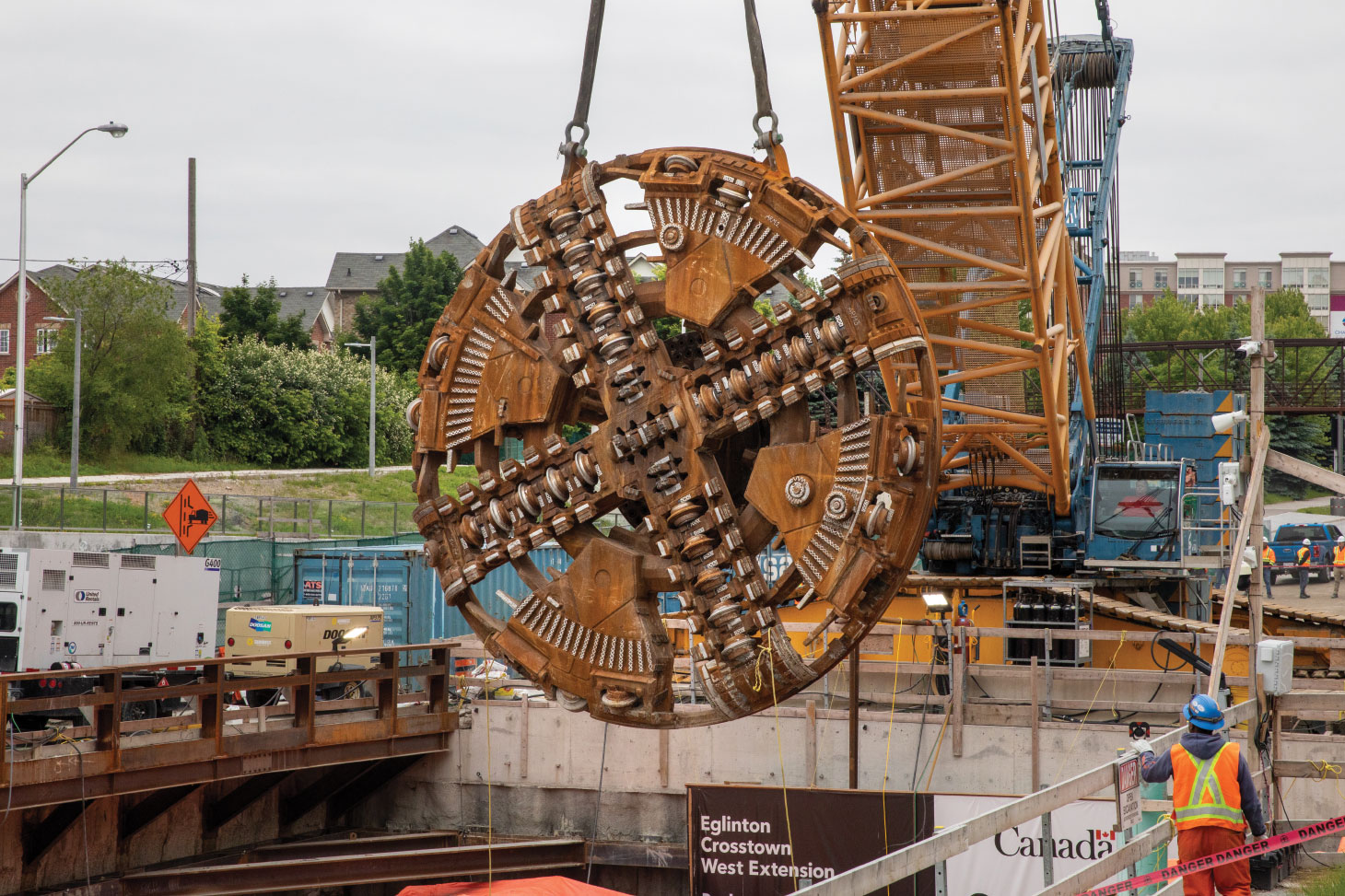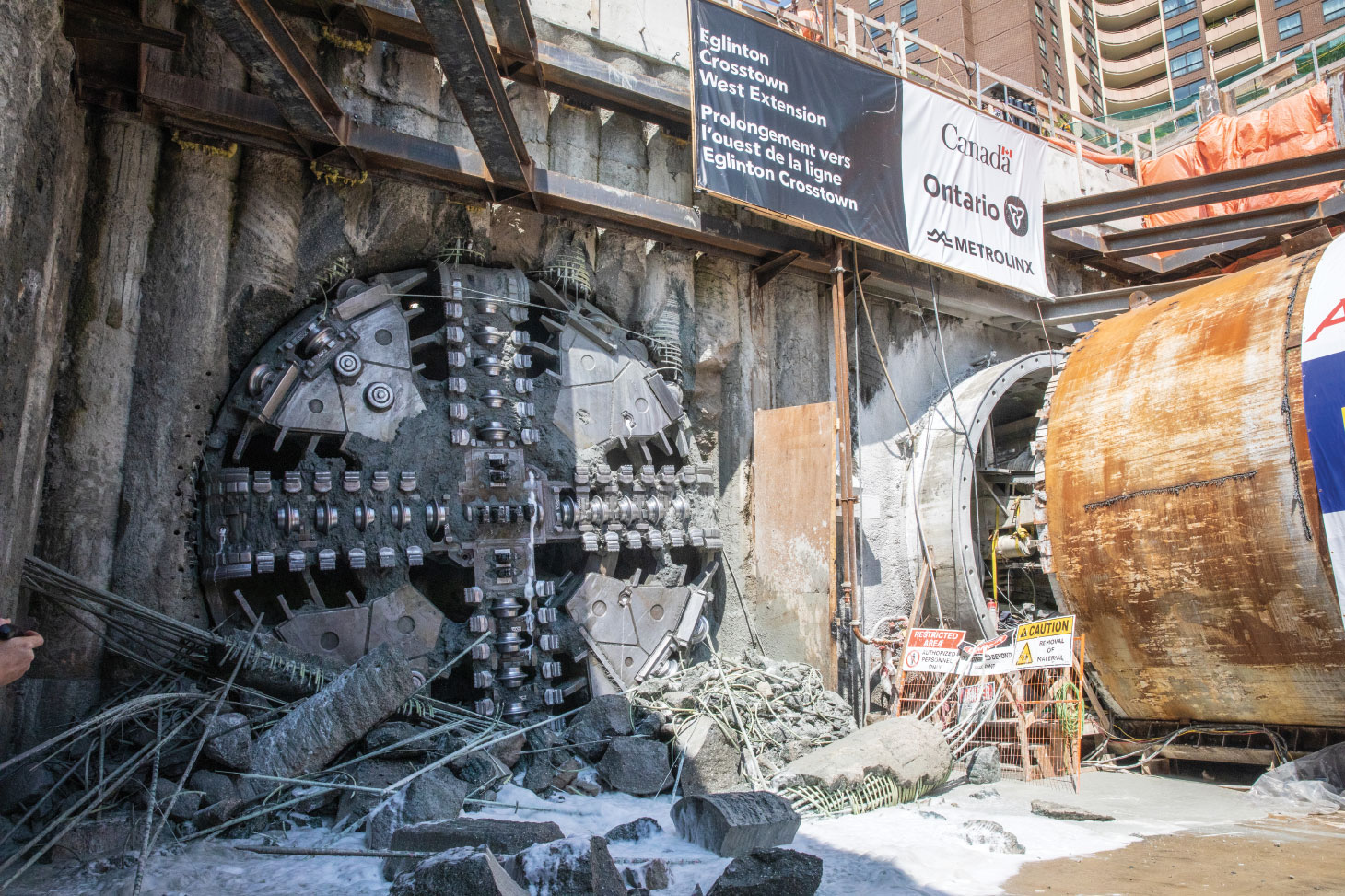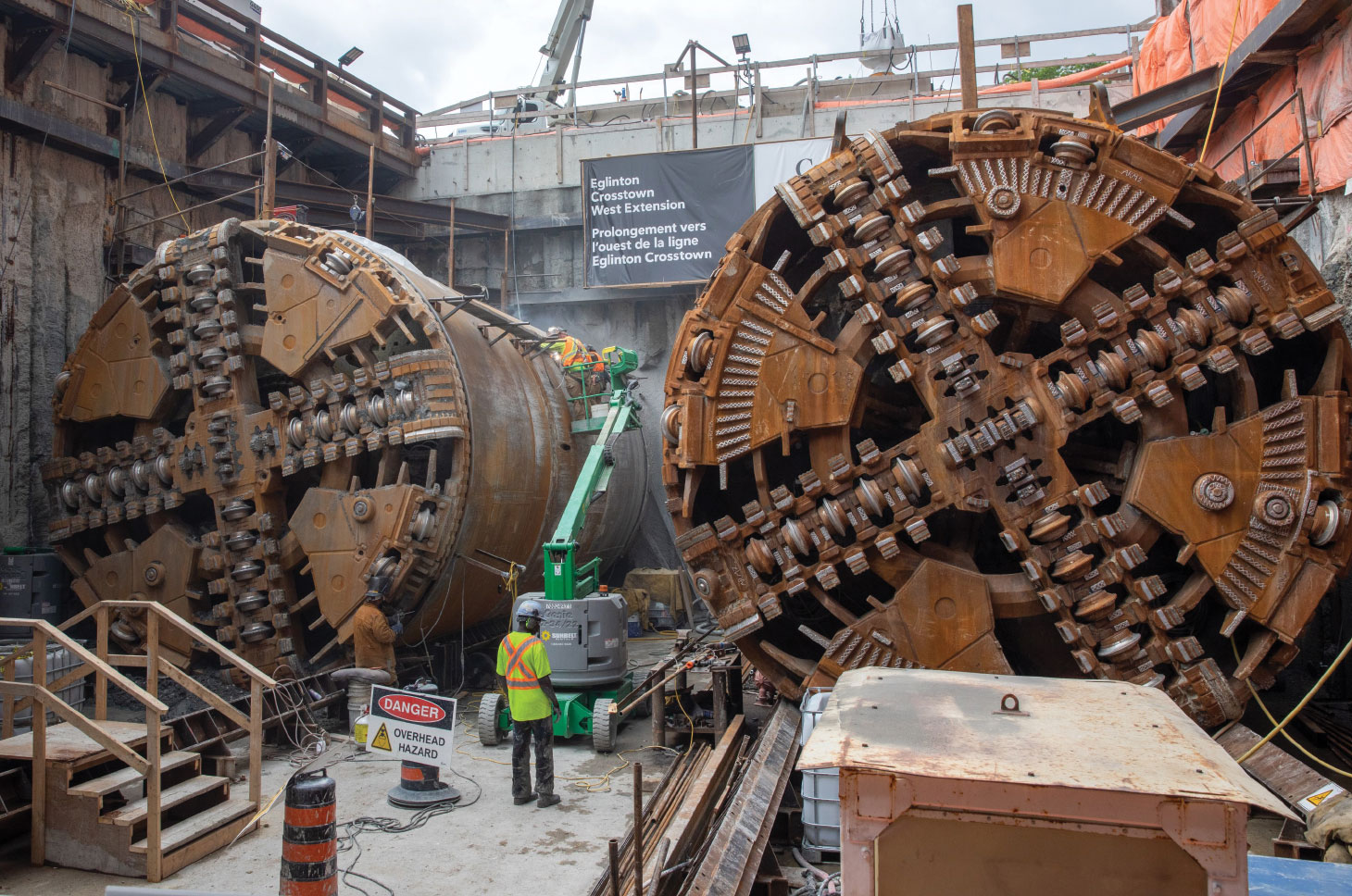
It’s not very often members of a construction crew become local celebrities during the building of a multi-million dollar public infrastructure project.
Of course, Rexy and Renny are not exactly your typical construction workers. The two mammoth tunnel boring machines (TBM) were the driving force behind digging twin tunnels that will extend the Eglinton Crosstown LRT service 9.2 km further west and eventually create a continuous rapid transit line that stretches from Scarborough in the east end of Toronto, through midtown Toronto and into Mississauga.
As part of their job, the 750-tonne, 131-metre long machines were tasked with excavating 1.2 million tonnes of rock and soil where LRT lines will be established. They also installed more than 52,000 pre-cast concrete segments used to build more than 7,400 rings to support the tunnel walls. The duo wrapped up their work last May, much to the delight of community members who had come to feel connected with them over the previous 24 months. It was, in fact, members of the community who dubbed them Rexy and Renny as part of a public contest. Renny is short for Renforth Drive while Rexy represents the Rexdale neighbourhood in northwest Toronto.
“One of the lessons learned is that there may be benefits for infrastructure projects in urban areas to pile all four sides of secant walls for small structures like emergency exit buildings where the north/south walls and east/west are small [or] similar in size.”
Fayyaz Siddiqui, Metrolinx
Fayyaz Siddiqui is the senior project manager for Metrolinx, a public transportation agency created to improve the co-ordination and integration of all modes of transportation in the Greater Toronto and Hamilton areas.
Siddiqui says that the TBM launch and extraction shaft were both built with secant piles. Secant piles are overlapping concrete piles used to form retaining walls for excavations and underground structures. They offer a significant lateral strength advantage compared to sheet piled walls, prevent water from entering an area and help stabilize slopes. Headwalls for future underground stations and emergency exit buildings were also installed using secant piles.

Rock benches, horizontal levels or steps cut into the sides of an excavation site to prevent cave-ins, were also part of the support of excavation launch shaft where a portion of the shaft was situated in rock, Siddiqui says. Diagonal bracings and horizontal waler beams with tie-back anchors were installed as part of the secant pile support of the excavation system to provide added stability and support to the tunnels. A waler and strut system were installed as part of the secant pile support of the excavation system due to “space constraints” at the TBM extraction shaft. Tie-backs were also installed at the western wall of the extraction shaft where the Renny and Rexy broke through.
Siddiqui says the advantage of using the secant piling system was that it prevented groundwater from leaking into the excavation area of the tunnels, which helped minimize dewatering needs and provided “water tightness.” Interior dewatering efforts were carried out during shaft excavations. The secant piling system also helped the contractor to meet durability and design life requirements and minimize vibration and noise from construction.
The TBM launch and extraction shaft were both built with secant piles. Secant piles are overlapping concrete piles used to form retaining walls for excavations and underground structures.
Piling activities had to be carefully co-ordinated throughout the process to ensure headwalls were installed prior to the TBMs passing through the tunnels. As well, headwalls at future underground stations and emergency exit building locations were constructed using secant piles and were also used as locations for maintenance of the TBM cutterheads. Watertight cells adjacent to the headwall of the TBM extraction shaft were constructed with secant piles and dewatering was carried out within the cells to aid the breakthrough of Renny and Rexy.
In addition, dewatering walls were installed at cross passage locations to facilitate construction of the cross passages. Thankfully, there were no unexpected groundwater issues during the piling work, says Siddiqui. The support system also helped to retain soil during shaft excavation and limited ground movement, which helped stabilize adjacent utilities and other nearby structures.

A total of seven new transit stations will be built as part of the western extension of the Eglinton Crosstown LRT. Siddiqui says the stations were not built as part of the phase of construction that wrapped up last spring, meaning no deep foundation work related to their construction was required. He says those stations will be built as part of a future contract, which is expected to be awarded later this year.
The Eglinton Crosstown West Extension (ECWE) is expected to provide up to 69,700 rides each day following its completion later this year and will put 37,500 people within a 10-minute walk of public transit. It’s also projected that approximately 6.5 million fewer cars will travel on nearby roads each year as a result, and that could mean a reduction of greenhouse gas emissions of up to 5,800 tonnes annually. Siddiqui says tunnelling and foundation work that was part of the ECWE provided a valuable lesson for similar future projects.
“One of the lessons learned is that there may be benefits for infrastructure projects in urban areas to pile all four sides of secant walls for small structures like emergency exit buildings where the north/south walls and east/west are small [or] similar in size,” he said.